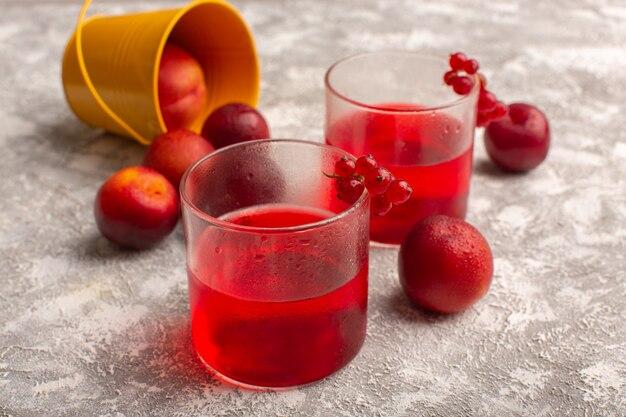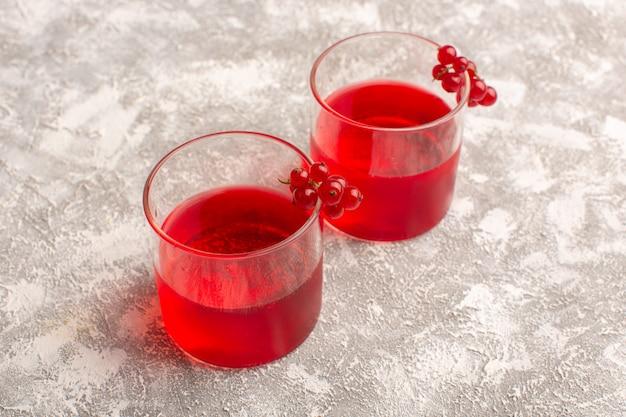Cranberry juice is a popular drink loved by many for its refreshing taste and vibrant red color. But have you ever wondered what gives cranberry juice its distinct hue? In this blog post, we will dive deep into the science behind why cranberry juice is red, shedding light on the compounds responsible for its eye-catching color.
But that’s not all! We’ll also address common questions about cranberry juice, such as its impact on kidney and bladder health. Is cranberry juice truly beneficial for these organs? And what about the pink variations of cranberry juice – are they as healthy as their red counterparts? Join us as we explore the fascinating world of cranberry juice and uncover the truth behind its color and health benefits.
So, if you’ve ever found yourself curious about the mysteries of cranberry juice or just want to learn something new, grab a glass of this ruby elixir and keep reading! By the end of this post, you’ll be equipped with a wealth of knowledge for your next cranberry juice discussion with friends or family. Let’s get started!
What Makes Cranberry Juice Red
The Science Behind Cranberry’s Signature Shade
When you think of cranberry juice, one thing immediately comes to mind: its vibrant, ruby-red color. But have you ever wondered what gives cranberry juice that eye-catching hue? Well, prepare to have your curiosity satisfied as we delve into the science behind cranberry’s signature shade.
Anthocyanins: The Color Squad
You can thank anthocyanins for cranberry juice’s red color. These pigments are a subclass of flavonoids, which are compounds found in plants that serve multiple purposes, one of which is providing vibrant hues. Anthocyanins are responsible for an array of colors in fruits and vegetables, such as the red in cranberries.
Antioxidants with a Fashion Sense
Not only do anthocyanins make cranberry juice visually appealing, but they also bring a host of health benefits to the party. These compounds act as antioxidants, which means they help protect our cells from damage caused by harmful molecules called free radicals. So, not only is cranberry juice a feast for the eyes, but it’s also a health-boosting elixir!
pH: The pHantastic Secret
Believe it or not, the acidity level of cranberry juice plays a role in its redness. Cranberries naturally have a low pH, which means they’re more acidic. This acidity affects the stability of the anthocyanin pigments, causing them to display their vibrant red color. So, the next time you sip on cranberry juice, raise your glass to the pH scale for adding to the aesthetic charm.
The Heat Factor
While cranberry juice is delicious served chilled, heat can also influence its color. When cranberries are heated during the juice extraction process, the heat helps break down the cell walls of the fruits, allowing more anthocyanins to be released. The increase in anthocyanins intensifies the red hue of the resulting juice. So, whether you prefer it warm or cold, cranberry juice will always bring the red to the table.
Closing Thoughts
The vibrant red color of cranberry juice is a result of a beautiful interplay between anthocyanins, pH, and heat. These natural factors combine to create a visually enticing beverage that not only adds a burst of color to your day but also provides a plethora of health benefits. So, the next time you enjoy a glass of cranberry juice, savor it with the knowledge of how science and nature collaborate to make it the red delight that it is. Cheers to cranberry’s crimson charm!
Keywords: cranberry juice, red color, anthocyanins, pigments, antioxidants, pH, acidity, heat
FAQ: What makes cranberry juice red
Is pink cranberry juice healthy
Cranberry juice is not only a tasty beverage but also packed with health benefits. Pink cranberry juice, which is a variation of the traditional red cranberry juice, offers similar advantages. It contains essential vitamins, including vitamin C, which boosts the immune system and helps fight off illnesses. Moreover, pink cranberry juice is rich in antioxidants that help prevent oxidative stress and reduce the risk of chronic diseases. So, go ahead and enjoy a glass of pink cranberry juice without any guilt!
Is cranberry juice good for your kidneys and bladder
Absolutely! Cranberry juice is renowned for its positive effects on kidney and bladder health. The natural compounds found in cranberries, called proanthocyanidins, help prevent bacteria, such as E.coli, from adhering to the walls of your urinary tract. This action reduces the risk of urinary tract infections (UTIs). Regular consumption of cranberry juice not only promotes urinary tract health but can also aid in preventing kidney stones. So, keep your kidneys and bladder happy by sipping on some cranberry juice!
What gives cranberry juice its vibrant red color
Ah, the secret to cranberry juice’s lusciously tempting red hue! The vivid red color of cranberry juice is primarily due to the presence of pigments called anthocyanins. These natural compounds, responsible for the delightful red or pink shades, are also found in other red fruits like cherries and raspberries. Anthocyanins not only contribute to the appealing color, but they also offer antioxidant properties, making cranberry juice a visually appealing and beneficial beverage.
Remember, whether you prefer classic red cranberry juice or its charming pink cousin, you can savor both their flavors and reap their numerous health advantages. So, grab a glass and let the vibrant red refreshment of cranberry juice bring a burst of goodness to your day!

